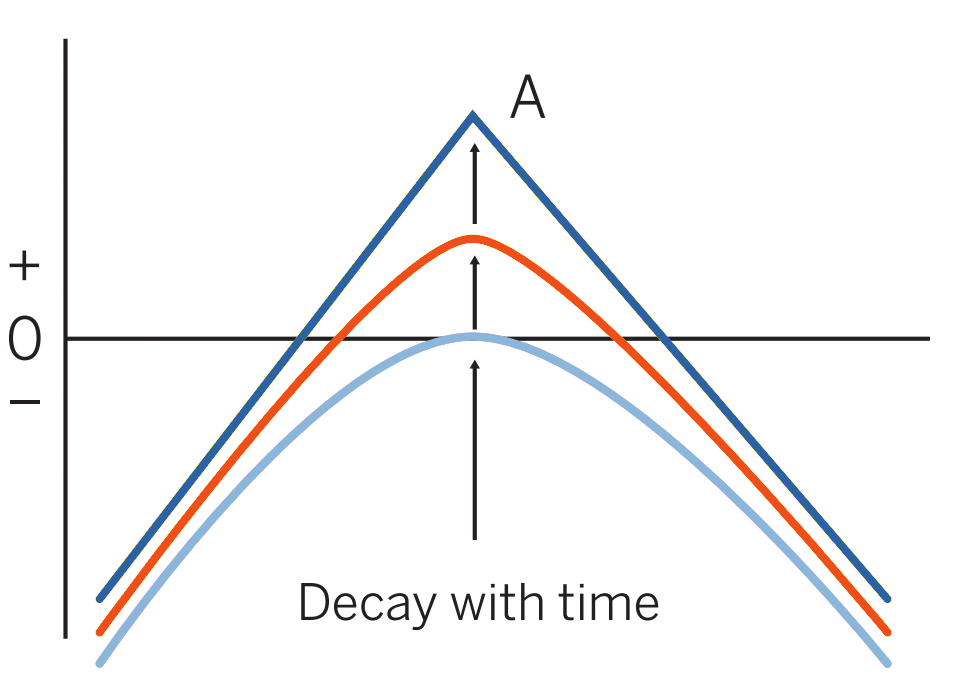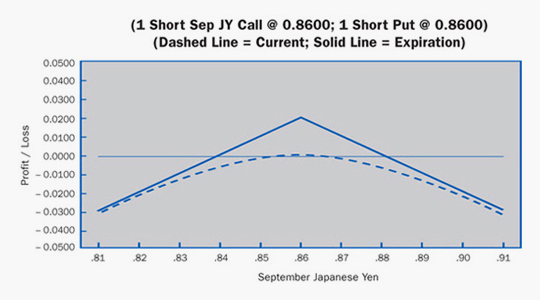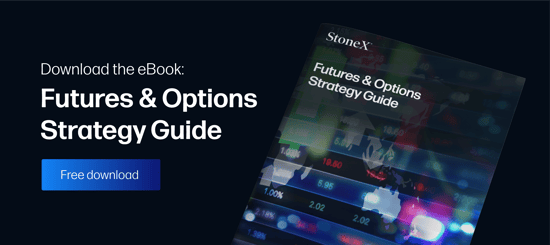Short Straddle
If market is near A and you expect market is stagnating. Because you are short options, you reap profits as they decay — as long as market remains near A.
Overview
Pattern evolution:

When to use: If market is near A and you expect market is stagnating. Because you are short options, you reap profits as they decay — as long as market remains near A.
Profit characteristics: Profit maximized if market, at expiration, is at A. In call-put scenario (most common), maximum profit is equal to the credit from establishing position; break-even is A +/– total credit.
Loss characteristics: Loss potential open-ended in either direction. Position, therefore, must be closely monitored and readjusted to delta neutral if market begins to drift away from A.
Decay characteristics: Because you are only short options, you pick up time-value decay at an increasing rate as expiration approaches. Time decay is maximized if market is near A.
CATEGORY: Precision
Short call A, short put A
SYNTHETICS:
Short 2 calls A, long instrument
Short 2 puts A, short instrument
(All done to initial delta neutrality)
Example

Scenario:
This trader finds a market with relatively high implied volatility. The current feeling is the market will stabilize after having had a long run to its present level. To take advantage of time decay and dropping volatility this trader sells both a call and a put at the same strike price.
Specifics:
Underlying Futures Contract: September Japanese Yen
Futures Price Level: 0.8600
Days to Futures Expiration: 40
Days to Options Expiration: 30
Option Implied Volatility: 12.6%
Option Position:
| Short 1 Sep 0.8600 Call | + 0.0100 ($1250.00) |
| Short 1 Sep 0.8600 Put | + 0.0100 ($1250.00) |
| + 0.0200 ($2500.00) |
At Expiration:
Breakeven: Downside: 0.8400 (0.8600 strike – 0.0200 credit). Upside: 0.8800 (0.8600 strike + 0.0200 credit).
Loss Risk: Unlimited; losses increase as futures fall below 0.8400 breakeven or rise above 0.8800 breakeven.
Potential Gain: Limited to credit received; maximum profit of 0.0200 ($2500) achieved as position is held to expiration and futures close exactly 0.8600 strike.
Things to Watch:
This is primarily a volatility play. A trader enters into this position with no clear idea of market direction but a forecast of less movement (risk) in the underlying futures. Be aware of early exercise. Assignment of a futures position transforms this strategy into a synthetic short call or synthetic short put.
Additional Futures & Options Strategies
- Long Futures
- Long Synthetic Futures
- Short Synthetic Futures
- Long Risk Reversal
- Short Risk Reversal
- Long Call
- Short Call
- Long Put
- Short Put
- Bear Spread
- Bull Spread
- Long Butterfly
- Short Butterfly
- Long Iron Butterfly
- Short Iron Butterfly
- Long Straddle
- Long Strangle
- Short Strangle
- Ratio Call Spread
- Ratio Put Spread
- Ratio Call Backspread
- Ratio Put Backspread
- Box or Conversion
- Futures & Options Strategies Overview
Contents Courtesy of CME Group.
